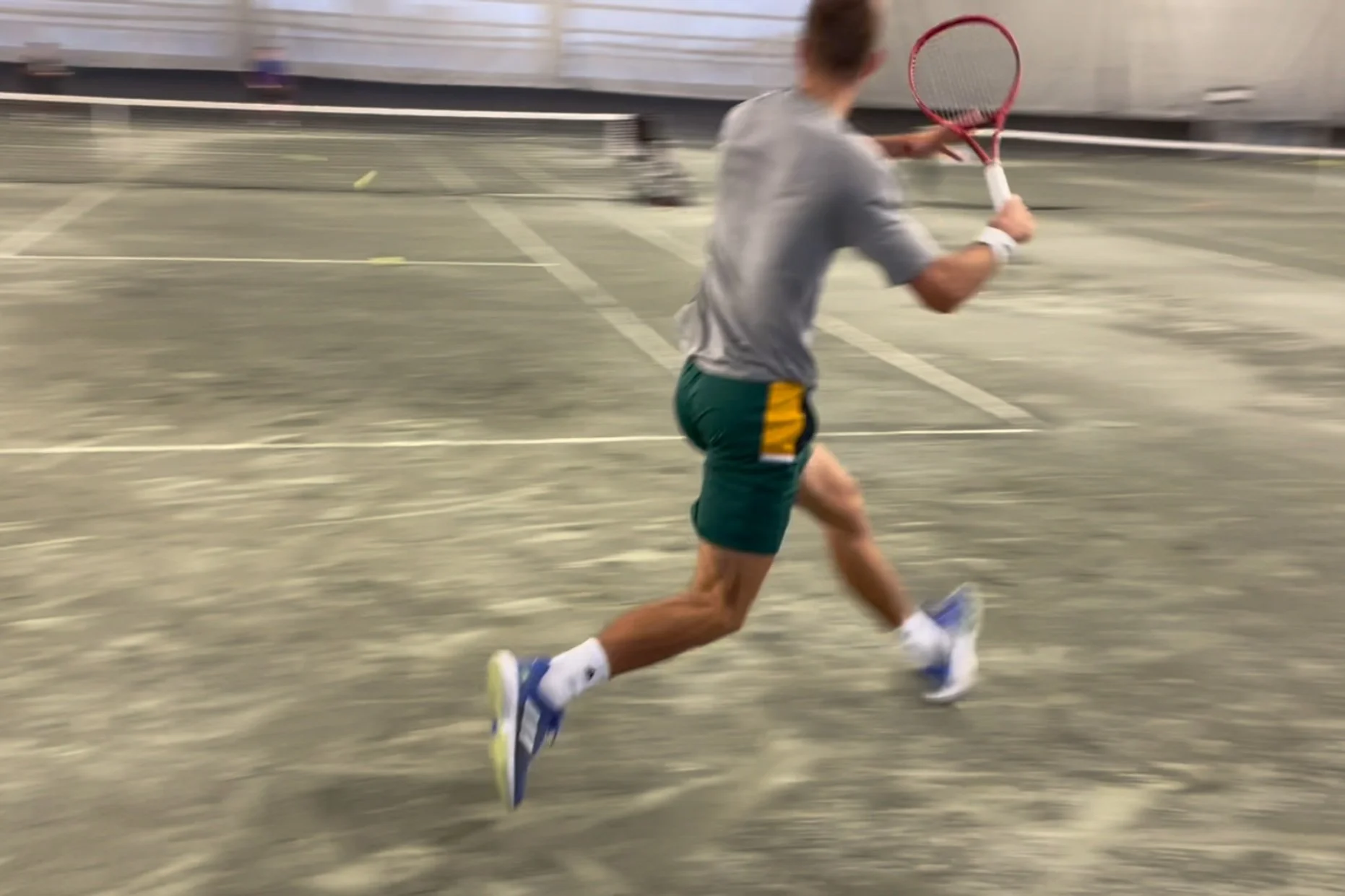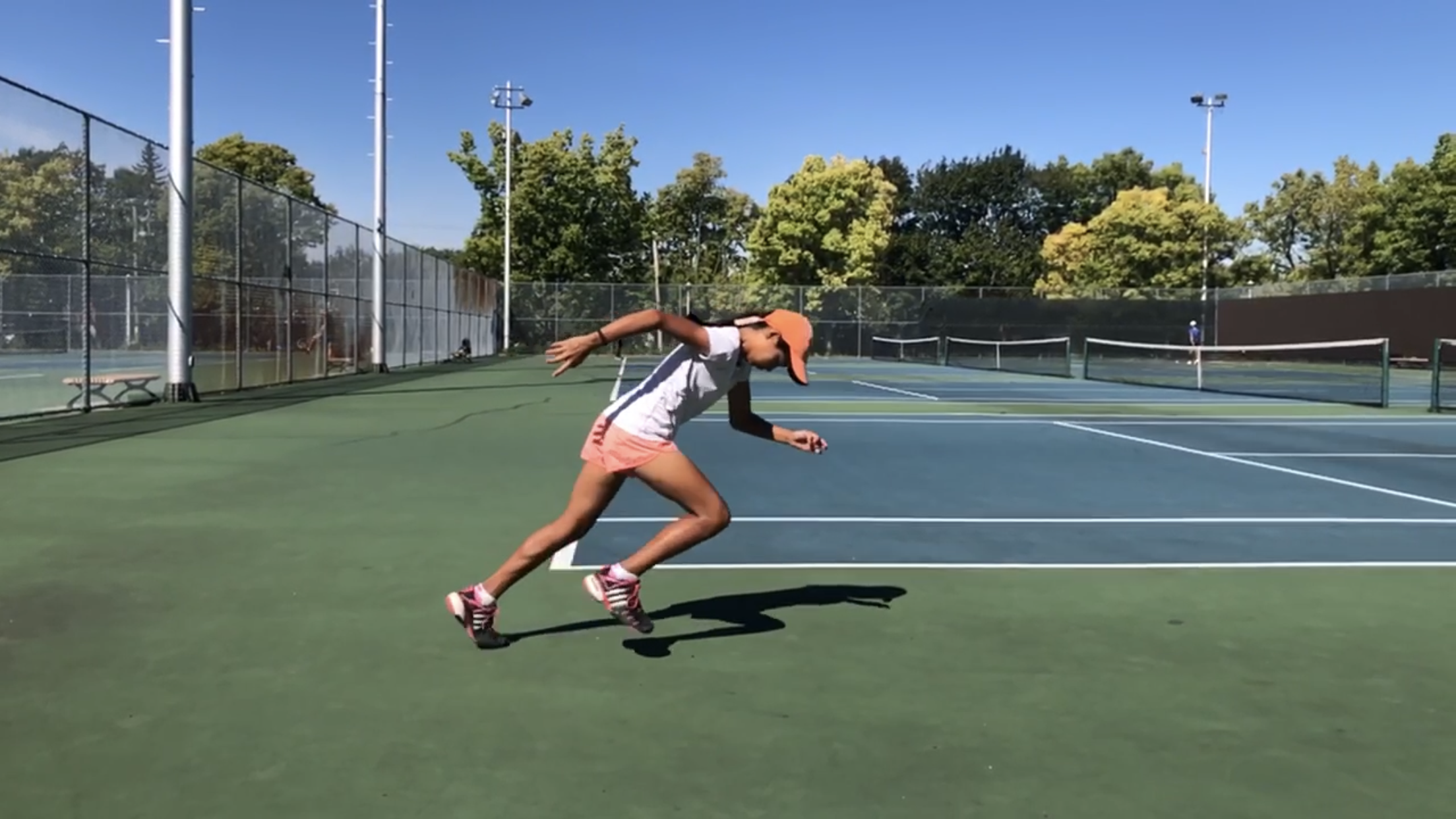Tennis is a sport where players aren’t reaching top running speeds very often, if ever. Most movements in tennis are short in both duration and distance. Some older stats point towards 3 metres as being the average distance a player moves during each shot. But averages don’t really tell us the whole story.
Despite that, I always urge coaches and players to make sure there’s enough speed and acceleration training in their programs. Read More…
Coaches, players, parents...even your aunt Judie know the importance of the serve in today’s modern game. More specifically, the first serve. The first serve is so critical that the top 10 servers on the ATP, year after year, win over 77% of their first serve points! And it’s not just on the men’s side. The top 10 women on the WTA win between 69%-79% of first serve points.
Want more proof? Look at Table 1 - in 2016, the top serving men won over 3/4 of their first serve points. On the other hand, when these top pros missed their first serves, they only won between 52% and 55% of their points.
I’ve been asked countless times - from tennis coaches to players and even parents - 'how can I get more leg drive on my forehand?' 'Or more jump from the legs on my serve?' 'Or more explosiveness when moving laterally?' There’s no simple answer. It truly depends on a number of factors, including your strength levels, coordination, training age, biological age, training history, genetics and more. But if I absolutely had to boil my answer down to one form of training, I’d have to look towards plyometrics.
There are many terms to describe plyometrics including plyometric training, plyos, jump training, shock training (that’s what Soviets used to call it) & ballistic training. I may use some of these terms interchangeably throughout this article but they all refer to plyometrics. Whatever you call it, it’s general premise is to increase power output.
This is a 2-part post. In today's article, we’ll take a brief look at the most important physical qualities a player should focus on during the off-season and how to best train them. Part 2 will then focus on the application - how a microcycle might be organized, how it fits into the overall training cycle and the interplay between on and off court training.
Medicine ball training is a widely popular training modality amongst tennis players at all ages and levels. More specifically, med ball (MB) training is primarily used to augment rotational power. For a review of the underpinning science and theory on this topic, please take a look at a previous post on this topic. Why augment rotational power though? Today's game is classified as power based - players are hitting the felt off the ball. The rationale from a training perspective is as follows: increase rotational power and you'll increase hitting speeds - whether that's groundstroke or serve speeds.
In last week’s post, we took a closer look at the force-velocity relationship and it’s underlying science. Recall that when force requirements are high, velocity outputs will be low - and vice versa. This has important implications because of the different movement requirements on a tennis court along with the methods used to improve relevant athletic qualities. Look at the figure below - it’s a theoretical look at where certain movements and strokes etc. lie on the force-velocity curve (this is an adapted representation based on science and my anecdotal experience). Even some of these movements will have different force-velocity requirements at the muscular level - when decelerating for a wide ball for instance, the initial deceleration step will have higher forces acting on the lower-body then the last step just before planting (because we’re trying to stop from a relatively fast movement speed).
In previous posts on COD, we spoke about the importance of reactive strength. In particular, we emphasized the role leg and ankle stiffness plays in the production of reactiveness. Ultimately, high levels of reactiveness are predicated by very fast eccentric-concentric muscle actions. These actions impact a variety of movements in tennis, including any type of first-step reaction that involves very little changes in knee, hip and ankle amplitudes. `
But what about movements that have longer ground contact times? For instance, a player is forced into a deep lunge position - perhaps because of a fast low ball or because they’re retrieving a low volley at net. To recover from these types of scenarios requires qualities that extend beyond reactiveness. This is where strength and power qualities come into play. While reactiveness is great when joint angles are small, inertia is low and ground contacts are short, when these parameters are reversed, fast stretch shortening cycle (SSC) abilities won’t cut it.
Last week we introduced reactive strength and its underpinning qualities. If you haven’t read that post, I strongly encourage you to do so, as it’ll provide a scientific rationale for what’s to come in this article.
Recall that reactive strength is effectively the fast component of the stretch-shortening cycle (SSC) - SSC activity being a rapid change from an eccentric to a concentric contraction that produces more power than would be possible with a concentric only contraction. We also determined that reactive strength is quite important as it relates to change of direction (COD) in tennis. There are 2 reasons for this. First, it’ll improve a player’s split-step ability - effectively allowing for a faster first step initiation - AND it can help with movements - along with recoveries - that are short but require high levels of explosiveness (think of shots that are near you but are coming at you with speed).
Many coaches and players often speak of the importance of power in tennis. From movement characteristics to its development during the execution of groundstrokes, serves and so forth. But power in and of itself simply means the rate at which work is performed. When you’re running at a steady sub-max pace, you’re still producing power - but I don’t think that’s the power a tennis player is after, do you? What we’re more concerned with is MAXIMUM POWER - this is the quality that helps when exploding into a big forehand or going for an all out first serve. In this post, we'll briefly outline max power and it's relationship to force output and velocity. We'll also provide video examples of a number of general & specific exercises for the development of max power in tennis and to conclude, a general framework will be outlined so that coaches and players can program/implement med ball exercises into their training regimes.
There’s no argument that the first serve is quite important on both the men’s and women’s tours. The percentages speak for themselves - the top servers on tour win about 3 out of every 4 points when the first one goes in and only about half the points when they miss the first serve. Those are the stats. And although spin, direction, patterns etc. have a lot to do with that, it seems that the bigger your serve, the more points you win.
Which brings me to the focus of this article. I recently started a 6-week pilot study to see if an overload throwing program can improve serve speed. More specifically, I’ll be throwing a weighted ball (similar to a medicine ball only smaller) twice per week and tracking serve speed on a weekly basis.
There’s no question the shoulder takes a beating in tennis. I mean, players use it on every shot. Whether that’s to create lots of torque to hit a big forehand or to stabilize the shoulder when punching a volley...the shoulder has many functions and roles. But perhaps the biggest toll on the shoulder occurs in a movement you wouldn’t normally consider...the deceleration phase (aka the follow-through phase) of the serve. This is the moment after impact where the posterior muscles of the shoulder act in an eccentric manner to essentially stop the head of the humerus from being dislodged from the glenoid fossa (aka think arm dislocating from shoulder...that wouldn’t be fun). Ellenbecker & Kovacs (2008) call the deceleration phase “the most violent of the tennis serve”. That’s a pretty big statement, and probably something that needs to be considered in the training of the tennis shoulder. But why exactly is this phase of the serve so critical? What type of strength is necessary? And what kind of exercises can tennis players incorporate into their program to optimize the serve keep the shoulder healthy? We’ll explore all of these points in this article, so read on.
How do different athletic qualities fit into the program of a tennis player? This is a complex question but one that deserves an answer. With information being so readily accessible these days, there are countless videos of players doing all kinds of things off the tennis court. But let me ask you this: just because a top 100 or 50 player is doing X or Y, does it mean it’s effective? Is it driven by some underlying scientific basis? Often times, it’s not. It’s a regurgitation of someone else’s training or a drill that was once seen before. If you’re a player, and someone is telling you to do squats on a stability ball…or ladder drills to develop agility and change-of-direction (COD) ability...seek alternatives as these are merely gimmicks that have little transfer to the aforementioned performance qualities.
This post will touch on one of the most important qualities for a tennis player - reactive ability. Being reactive will help any tennis player be set for more shots and run down tougher balls without having to run any faster than they already do. Now before I get into the nitty gritty details I think it’s important to distinguish between reactive ability and reaction time (no they are not the same thing...although also not mutually exclusive).














